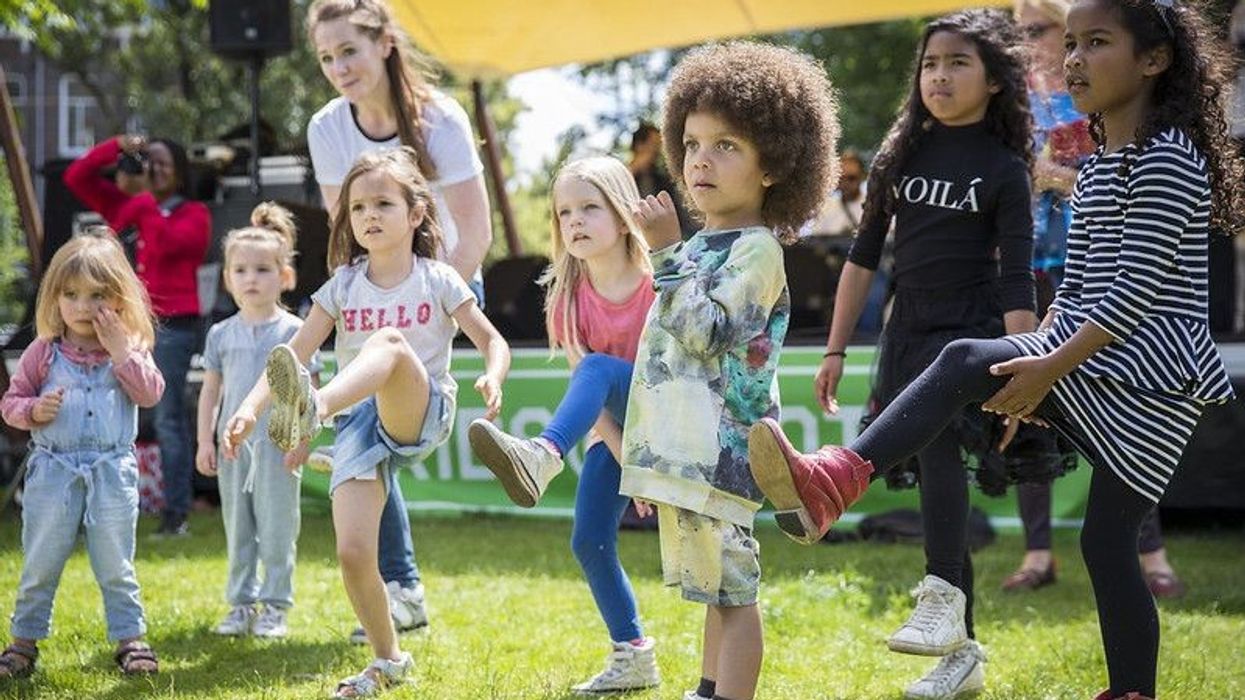With the internet, technology and knowledge we have today, kids have almost unlimited information at their fingertips.
If the kids fancy a change from baking and crafts, there's still lots of new things they can learn. Now more than ever face-to-face contact is something to be treasured, so why not challenge the kids to learn some old-fashioned life skills?
Whether it's something as simple as writing a meaningful thank you letter, or learning how to cook a meal for the family, this list of old-fashioned skills will teach kids some fun lessons and help them prepare for the future!
1. How to iron and hang/fold a shirt correctly.
2. How to properly address and sign off a letter, card and email.
3. How to lay the table properly.
4. Making sure to ask everyone if they would like some when making themselves something to eat or drink.
5. If you have pets, how to care for them on a day to day basis. This could include grooming, feeding, training and walking.
6. How to make a cup of tea and coffee to the preference of the person asking.
7. How to follow a recipe, and make sure all the measurements and timings are correct. Also, how to clean up once you're finished cooking so the space is ready for the next person to use.
8. How to use the dishwasher and washing machine/dryer.
9. How to make a simple flower arrangement, either from bought flowers or fresh ones.
10. How to sweep the floor properly and dispose of the mess in the bin.

Top Tip: Why not try a daily challenge, where the kids can try out a different skill every day?
11. How to prepare and cook a simple meal for the family, and have it ready in time for dinner.
12. Learning the basic nutritious value of different foods and how to healthily enjoy them all.
13. How to cook a baked potato (and experiment with different toppings!).
14. How to plant new flowers and plants in the garden, and how to pull weeds out properly so they don't grow back.
15. How to look after and maintain a houseplant. (Top Tip: A great idea is for kids to learn how to design and make their own schedule for when plants need to be watered and the conditions they are to be kept in. They can then put this up near the plants so they know what to do).
16. How to bake a simple cake (such as a victoria sponge or easy traybake).
17. How to apologise properly and genuinely, and how to make sure the same thing doesn't happen again.
18. How to oil a bike chain and check tyre pressure.
19. How to use the phonetic alphabet for when they're speaking on the phone.
20. How to make simple pizza dough from scratch (Top Tip: This ties in well with skill number 11!). This is a great way for kids to experiment with simple cooking and serving a meal. Check out some of our great homemade pizza suggestions here!

21. How to read music and play a musical instrument.
22. How to start a fire properly and safely, and how to keep it alight. A very important bonus skill is to learn how to toast the perfect marshmallow!
23. How to write a cheque, and what to do if you happen to receive one.
24. How to pick and press flowers and make them into something beautiful!
25. How to politely change the topic of a conversation to be something more enjoyable/appropriate.
26. How to politely accept or decline an invitation.
27. How to use leftover vegetables or meat to make a simple stock, and the different ways stock can be used to create a tasty dish from scratch!
28. How to budget. You can make this into an activity by playing a game that involves mock money, such as monopoly, or even by allowing the kids to do the weekly food shop with you, and help you decide what to get within a set budget.
29. How to stitch a ripped or torn item of clothing back together.
30. How to write a thoughtful and meaningful thank you letter (or text/email, since letter writing is less common these days).

31. How to give a well thought-out and genuine compliment.
32. How to preserve food- whether it's freezing, sealing or even making preserves, teaching kids this skill will help them minimise food waste.
33. How to play a simple board game, such as chess, checkers, backgammon or scrabble.
34. How to be a good sport (i.e. how to lose gracefully, and be respectful when winning a game).
35. How to do laundry and dry it. Then, how to fold it neatly and put it away properly.
36. How to read a map and use a compass. You can easily teach kids this skill by taking them out for a walk and giving them a destination to get to. They can then lead you there with their map-reading skills.
37. How to follow instructions when constructing something simple (i.e. a flat pack item or toy).
38. How to use the vacuum cleaner.
39. How to use a first aid kit, and basic first aid skills such as the recovery position and Heimlich manoeuvre.
40. To get into the habit of reading a little bit every day.

41. How to clean a mirror/windows without any smudges.
42. How to put aside and save money for a specific goal. This is something kids can actually put into practice just by using something as simple as a piggy bank. Then they can feel that sense of achievement when they have paid for something they wanted all by themselves!
43. How to see the positives when things don't work out the way you hoped. This applies to schoolwork, job applications, or even things as small as making a drawing or piece of work that didn't go to plan. Teaching kids how to work through their emotions and come up with helpful solutions is an invaluable life skill.
44. How to shuffle a deck and play a simple card game. Some child-friendly card game options are: Snap, Rummy, Go Fish, Old Maid, and Cheat.
45. How to plan and select a carefully thought-out gift for someone, and wrap it nicely.
46. How to introduce yourself to someone politely (i.e. 'Hello, my name is ..... and I am ...... . How about you?')
47. How to manage their time. This is especially helpful for when kids are revising for exams or if they just have a busy schedule. Encouraging them to create a 'daily timetable' where they assign each task to a time of day, and can tick off their to-do list as they go.
48. How to mow the lawn and tidy up the garden.
49. How to ride a bike out and about safely, and adhere to road safety rules.
50. How to frame a picture and hang it up straight.












